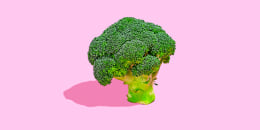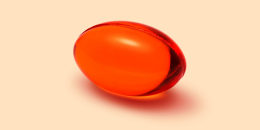The 75 Soft Challenge rolls a healthy diet, exercise and mental wellness into one total body regimen.
Follow along for about two-and-a-half months and you may emerge feeling fitter, lighter and less stressed, experts say.
Participants often share their experience on social media for motivation and accountability, with some calling 75 Soft a "gentle reset," and noticing changes in their body and attitude.
Many people find it more practical and easier to stick with than 75 Hard — the viral 75-day regimen with strict rules for diet, exercise and self-improvement.
Some participants do it annually, often beginning in January to get a fresh start in the new year.
"This is my favorite time to start this challenge," said one TikTok user, who is on her fourth round of 75 Soft.
The original 75 Hard is demanding and difficult to do, but it’s buzzy, with participants showing off impressive results on social media.
For people who want to join the movement, but find it too hard, 75 Soft can be a more feasible way to do the program, experts say.
“I think it’s both doable and realistic for most people,” Dr. Jordan Metzl, a sports medicine physician at the Hospital for Special Surgery in New York, tells TODAY.com.
“When getting started with a health, fitness and nutrition routine, the best one is always going to be the one that’s not so overwhelming,” added Louise Valentine, a certified personal trainer, American College of Sports Medicine Practitioner of the Year and owner of Breaking Through Wellness.
What is 75 Soft?
It’s a beginner-friendly and less strict version of 75 Hard. It still has daily guidelines for diet, exercise and self-improvement, but the rules are more flexible and less demanding.
Some people who've posted about their 75 Soft experiences on TikTok said they lost weight and felt better mentally, emotionally and physically. Others mentioned they liked having a routine to stick to and called it a more attainable alternative to 75 Hard.
The 75 Soft Challenge is widely credited to have been created by Stephen Gallagher, a fitness influencer in Ireland known as @stephengfitness on TikTok. (His account is no longer active.)
In a video he posted in 2021, viewed 2.5 million times, Gallagher described the challenge this way: “It’s like the 75 Hard, but for people who don’t have the time for two 45-minute workouts a day.”
75 Hard vs. 75 Soft
Here is how the two challenges compare:
75 Hard Challenge rules
Do the following every day for 75 days:
- Pick a diet to follow, with no alcohol or cheat meals.
- Drink a gallon of water daily.
- Complete two 45-minute workouts of your choice every day. One must be outside, regardless of the weather.
- Read 10 pages per day of a non-fiction book.
- Take a progress photo every day.
- If you skip a day, you must start over.
“That’s intense. That’s a big commitment,” Metzl says.
“It’s definitely a very all-or-nothing mindset so it doesn’t necessarily give you much leeway for fitting it into it every day real life,” Valentine notes.
75 Soft Challenge rules
Do the following every day for 75 days:
- Eat well and only drink alcohol on social occasions: This diet rule is a bit vague, Valentine says, so she’d recommend keeping it simple and realistic: Start with one to three nutrition habits that fit your life, such as eating at least five servings of vegetables per day, reducing carbs or limiting eating out. This might be the time to try the Mediterranean diet. Top nutrition tips from dietitians include eating more plants, avoiding ultraprocessed foods like soft drinks and sugary baked goods, and looking at every meal as an opportunity to start fresh and add more nutrition to your day.
- Train for 45 minutes every day, with one day of active recovery every week: Metzl likes that this rule doesn’t state what specific exercise you have to do for your workout or your active recovery. It could be 45 minutes of walking, yoga or strength training. That daily amount of exercise is “definitely going to be beneficial for your longevity and health,” Valentine adds. Beginners can start with a shorter workout and build up to 45 minutes a day, she advises. It’s also OK to break it up: take three 15-minute walks throughout the day, for example. On your active recovery days you might walk at a more leisurely pace or go for a swim. Mornings are usually the best time to work out, experts say. If you find it hard to get out of bed early to exercise, use Hoda Kotb's three-word mantra to get motivated: "Today’s the day."
- Drink 3 liters of water a day: It amounts to about 12 cups of water. “That seems like a lot. Most people just end up drinking a lot and then peeing a lot,” Metzl says. “If you’re exercising a lot, maybe, but I’m not a big fan of forced intake.” But Valentine says that amount is a good guideline, noting that drinking enough water can help decrease cravings.
- Read 10 pages of any book: Both experts say this rule is great for mental health, expanding your mind and making you feel connected to the world. The benefits of reading include a potentially longer life, a boost in empathy, slower cognitive decline and a reduction in stress, TODAY.com previously reported. Reading fiction is especially good for keeping memory sharp because it requires the brain to remember characters and plot lines.
There’s no mention of taking a progress photo every day or having to start over if you skip a day.
Metzl likes that no progress photos are required because they make people "too hung up on what they look like, and I’d rather have the focus be on what they’re doing and what they’re eating,” he says.
Still, progress photos can help people measure their success so they can stay motivated, Valentine notes.
Benefits of 75 Soft
The 75 Soft Challenge is safe and effective to do for 75 days and beyond, and can lead to lasting changes and healthier habits, both experts say.
As always, check with your doctor before starting a new exercise or diet routine.
Find what works and give yourself some grace to recognize when something doesn't fit your lifestyle, Valentine advises.
“Even if you just kept one of these habits and you improved slowly over time, you’re still progressing your health and fitness in the right direction,” she adds.
Challenges like 75 Soft can be enjoyable, allow people to be part of a community and provide a goal — three factors that studies show can help you stick to a new commitment, Metzl notes.
“It has a reasonably high chance of resulting in long-term success,” Metzl says.
Doing the challenge for 75 days is also important because it takes about two-and-a-half months to make a habit stick, he adds.
Drawbacks of 75 Soft
The experts didn’t see any negatives, except overdoing it on exercise in the beginning, especially if someone has been sedentary.
“If anyone went too hard or too aggressive in their exercise at first, that might either get you to the place where you get injured, you end up too fatigued or you hit a plateau too soon,” Valentine cautions.
“So I would say start small, keep it consistent and progress over time.”
Bottom line:
The 75 Soft Challenge is safer, and more realistic, doable and sustainable than 75 Hard, both experts say.
Both encouraged people to keep going beyond the 75 days.










